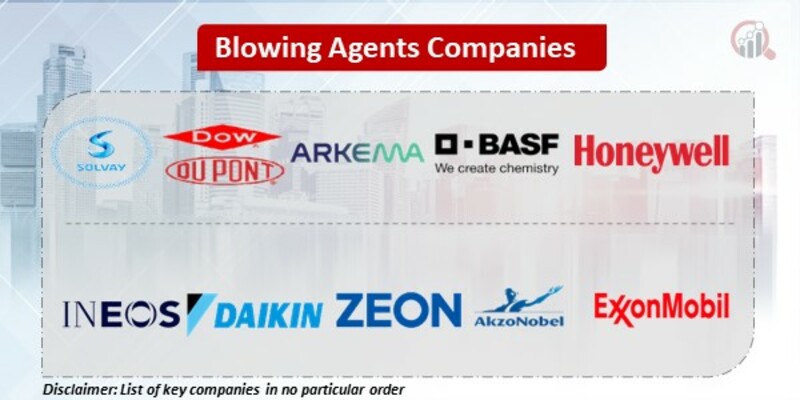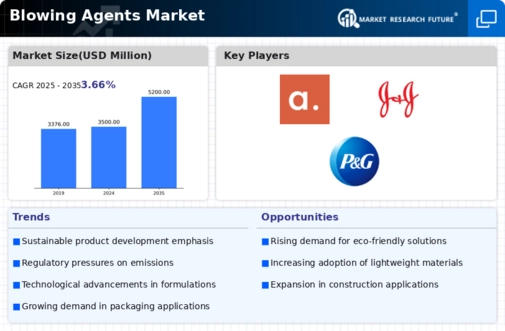Top Industry Leaders in the Blowing Agents Market
 Blowing agents, those magical ingredients that transform polymers into lightweight, buoyant foams, power a vast and dynamic market. Navigating this landscape requires charting a course through the strategies employed by industry giants, understanding the complex factors shaping market share, staying abreast of the latest news, and deciphering the whispers of recent developments. Buckle up, for we embark on a 1000-word voyage into the heart of the blowing agents market.
Blowing agents, those magical ingredients that transform polymers into lightweight, buoyant foams, power a vast and dynamic market. Navigating this landscape requires charting a course through the strategies employed by industry giants, understanding the complex factors shaping market share, staying abreast of the latest news, and deciphering the whispers of recent developments. Buckle up, for we embark on a 1000-word voyage into the heart of the blowing agents market.
Strategies for Buoyancy in the Market:
-
Diversification: Leading players like The Chemours Company, BASF, and Arkema are expanding their portfolios beyond traditional hydrocarbon blowing agents (HCFCs, HFCs) to embrace eco-friendly alternatives like CO2 and water-based solutions. This caters to growing sustainability concerns and regulatory landscapes. -
Regional Prowess: Asia-Pacific reigns supreme, accounting for over 50% of the global market. Companies are establishing local production facilities, forming strategic partnerships, and tailoring product offerings to regional needs in this high-growth zone. -
Innovation Anchors: Research and development are pivotal for long-term success. Solvay, for instance, is actively developing low Global Warming Potential (GWP) blowing agents, anticipating stricter environmental regulations. -
Vertical Integration: Some players are integrating upstream (chlorine/alkali production) and downstream (foam manufacturing) activities. This strengthens supply chain control, optimizes costs, and offers a competitive edge. -
M&A Maneuvers: Mergers and acquisitions play a role in market consolidation. Dow Chemical's acquisition of Chemours' fluoroproducts business in 2015 reshaped the landscape for HFC blowing agents.
Factors Shaping Market Share:
-
Demand Drivers: Polyurethane foam, the largest user of blowing agents, finds applications in construction, automotive, and furniture industries. Rising urbanization and disposable incomes in emerging economies fuel this demand. -
Raw Material Woes: Price fluctuations in key raw materials like chlorine and hydrocarbons due to energy costs and environmental regulations can impact production costs and profitability. -
Green Tide Rising: Stringent environmental regulations, particularly in Europe and North America, are pushing the industry towards greener blowing agents with lower ozone depletion potential (ODP) and GWP. This presents both challenges and opportunities. -
Substitute Squalls: While blowing agents hold unique properties, competition from alternative foaming technologies like nitrogen injection or vacuum foaming can impact market share in specific applications.
Key Players
Some of the manufacturers operating in the global blowing agents market are Solvay (Belgium), The Dow Chemical Company (U.S.), INEOS Group (Switzerland), DAIKIN INDUSTRIES, LTD. (Japan), Arkema (France), BASF SE (Germany), SINOCHEM GROUP (China), ZEON CORPORATION (Japan), Harp International Ltd. (U.K), Honeywell International Inc. (U.S.), Exxon Mobil Corporation (U.S.), AkzoNobel N.V. (Netherlands), and The Chemours Company (U.S.).
Recent Developments:
-
July 2023: BASF patents a new technology for recycling blowing agents from waste foam, promoting circular economy practices in the industry. -
June 2023: Collaboration between universities and industry players intensifies research on novel blowing agents derived from waste biomass, opening doors to a more sustainable future. -
May 2023: A group of major foam manufacturers announce a joint initiative to develop standardized testing protocols for low-GWP blowing agents, facilitating their wider adoption.









